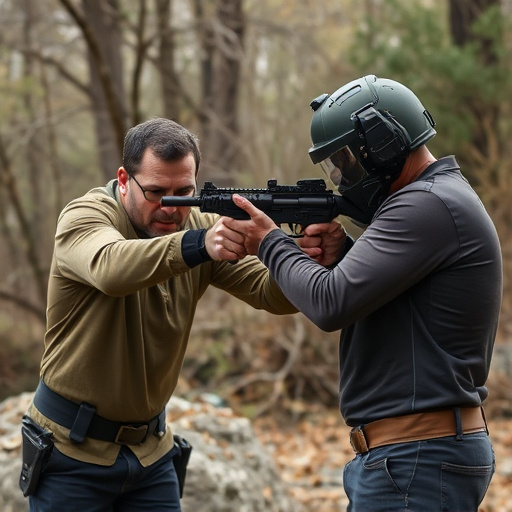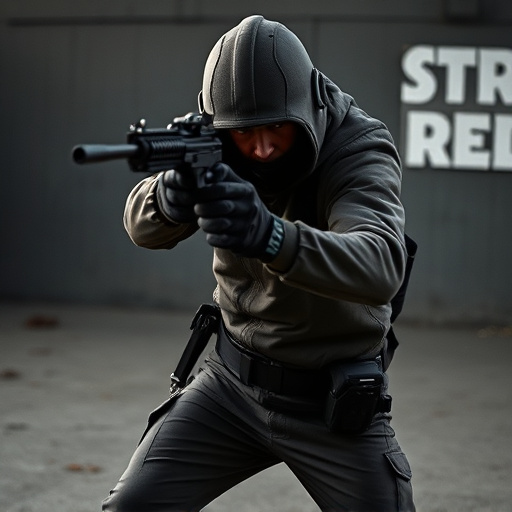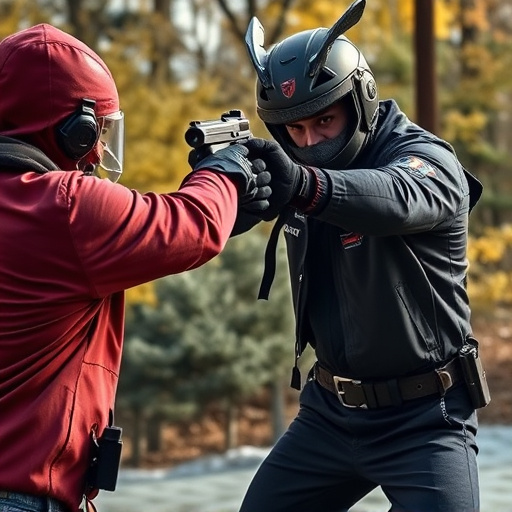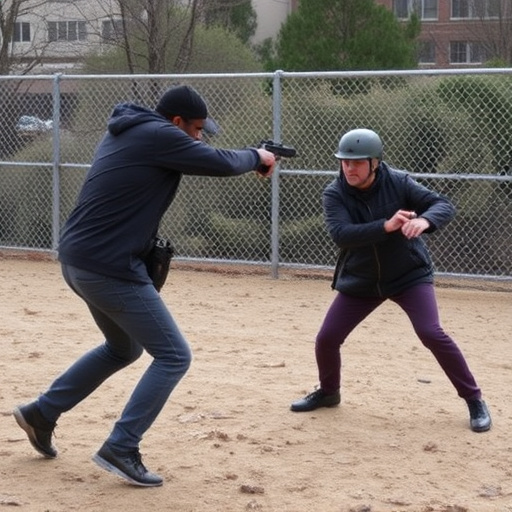Concealable Stun Guns vs Tasers: Safety & Effectiveness for Women
Concealable stun guns are popular among women for self-defense due to their ease of use, range (up t…….
Concealable stun guns are popular among women for self-defense due to their ease of use, range (up to 20 feet), and safety compared to Tasers. While both non-lethal, Tasers use electrical current through contact to paralyze muscles, while stun guns override motor functions with high-voltage pulses. Local laws vary widely on their ownership; women should check regulations before purchasing. Both require training for safe use; stun guns offer more control and are designed to temporarily incapacitate assailants without severe injury. Top-tier concealable stun guns for women feature high voltage outputs, ergonomic designs, integrated flashlights, and robust construction.
“In today’s world, self-defense options like concealable stun guns are gaining popularity among individuals seeking protection. However, understanding the nuances between stun guns and tasers is crucial before making an informed decision. This comprehensive guide aims to dissect these two non-lethal weapons, exploring their legal status, design variations, safety measures, and popular choices tailored for women’s self-defense needs. By the end, readers will grasp the key differences and benefits of each.”
- Understanding Tasers and Stun Guns: A Comprehensive Overview
- Legal Considerations for Concealable Self-Defense Weapons
- Design and Functionality: Taser vs Stun Gun Differences
- Safety and Training: Ensuring Effective and Responsible Use
- Popular Choices: Top Concealable Stun Guns for Women
Understanding Tasers and Stun Guns: A Comprehensive Overview

Tasers and stun guns are both non-lethal weapons designed to incapacitate an attacker, but they operate on different principles and have distinct features. Tasers, officially known as Electronic Control Devices (ECDs), use electrical current to disrupt muscle control in the body, causing temporary paralysis. They typically consist of two probes connected to wires that fire into the target, delivering a powerful electric shock. On the other hand, stun guns, also called stun devices or electroshock weapons, generate high-voltage, low-current electrical pulses that override the body’s motor functions. Unlike tasers, stun guns do not require direct contact to be effective and can be more easily concealed, making them popular choices for self-defense, especially among women seeking concealable stun guns.
The key differences lie in their range, safety, and ease of use. Tasers generally have a shorter effective range, around 3-5 meters, and require physical contact or proximity to fire the probes. Stun guns, on the other hand, can deliver a powerful shock from a distance, typically up to 10-20 feet (3-6 meters), making them more versatile for self-defense scenarios where direct contact might be avoided. Additionally, stun guns are generally considered safer because they do not always result in permanent physical harm and are less likely to cause secondary injuries, as there is no projectile or sharp component involved.
Legal Considerations for Concealable Self-Defense Weapons

When considering self-defense weapons, legal considerations are paramount, especially with concealable options like stun guns or tasers. The legality and regulations surrounding these devices vary greatly depending on your location. For instance, some areas have strict restrictions on who can own and carry a stun gun, while others may allow it with certain permits or for specific purposes, such as self-defense in the home.
Women considering concealable stun guns should pay close attention to local laws, as there might be additional requirements or limitations based on gender. It’s crucial to understand that carrying any type of self-defense weapon comes with responsibilities and potential consequences. Always check state and local regulations before purchasing a stun gun, and remember that open carry rules differ from state to state, further emphasizing the need for informed research and adherence to legal guidelines.
Design and Functionality: Taser vs Stun Gun Differences

Tasers and stun guns are both non-lethal weapons designed to incapacitate an attacker, but they function in distinct ways. Tasers, officially known as Electronic Control Devices (ECDs), use electrical current to disrupt muscle control, causing the target to fall to the ground temporarily. They typically consist of two probes connected by thin wires to a handheld device that fires them at close range. Stun guns, on the other hand, emit a high-voltage, low-current electric pulse through a metal probe or surface contact, overloading the nervous system and leading to muscle paralysis and disorientation. While both can be easily concealed, stun guns often offer more control and range in their functionality, making them popular choices for personal protection, especially among women seeking concealable self-defense options.
In terms of design, tasers usually have a barrel-like shape with a trigger mechanism and a power source, often rechargeable batteries. Stun guns can vary from compact devices resembling flashlights to more robust forms, but many are designed to fit comfortably in the hand or be easily concealed under clothing. Stun guns generally require direct contact or proximity to the target, while tasers can deliver an effective shock at a slightly greater distance, though both weapons have limited range and depend on proper training for safe and effective use.
Safety and Training: Ensuring Effective and Responsible Use

When it comes to self-defense, both Tasers and stun guns offer viable options, but understanding their distinct features is crucial for responsible use. One key difference lies in their impact and range—Tasers fire small probes that deliver a high-voltage electric shock, disabling an aggressor temporarily, while stun guns emit a strong electric pulse from a single point, causing muscle contractions and disorientation. This distinction is vital for ensuring safety, especially with concealable stun guns designed for women, as it helps users deploy the device effectively without causing permanent harm.
Training is another critical aspect of responsible use. For any weapon, including Tasers and stun guns, proper education and practice are essential. Users should learn not only the physical mechanics but also de-escalation techniques to avoid unnecessary situations. With concealable stun guns, women can take charge of their safety while staying prepared, but it’s imperative to prioritize training over quick fixes, ensuring every move is calculated and aimed at neutralizing threats effectively.
Popular Choices: Top Concealable Stun Guns for Women

When it comes to personal safety, women often seek discreet yet powerful self-defense tools that can be easily concealed. This is where top-quality concealable stun guns for women come into play. These compact devices offer a non-lethal way to deter potential attackers and ensure peace of mind while on the go.
Popular choices among concealable stun guns for women include models with high voltage outputs, such as 120,000 volts or more, which are capable of temporarily incapacitating an assailant without causing serious harm. Key features to look for include ergonomic designs for easy grip and activation, bright LED flashlights for low-light situations, and durable construction that can withstand the rigors of everyday carry. Additionally, many modern stun guns offer advanced safety mechanisms, such as automatic shut-off features after continuous use, ensuring responsible and effective self-defense.
When choosing a self-defense weapon, understanding the key differences between Tasers and stun guns is essential. While both offer effective means of personal protection, stun guns are generally more accessible and suitable for concealed carry, making them popular choices among women seeking to empower themselves. When purchasing a concealable stun gun, ensuring proper training and safety measures is vital to effectively deter potential threats and maintain control in dangerous situations.


